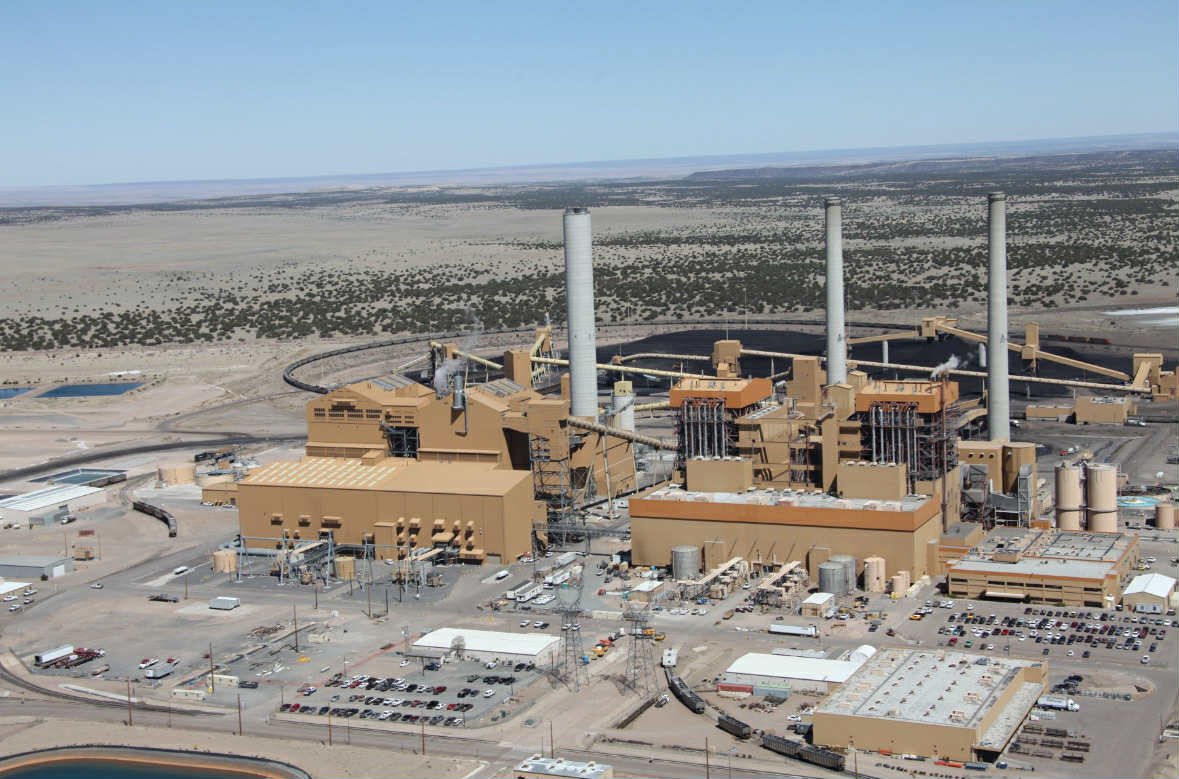SPRINGERVILLE, Ariz. — The Salt River Project (SRP) has approved a significant energy transition at the Springerville Generating Station, voting to convert its coal-fired Unit 4 to natural gas in a move that promises lower emissions and substantial cost savings but raises questions about the future of local jobs and tax revenues in Eastern Arizona.
The SRP Board of Directors approved the plan earlier this week, calling it the “lowest cost option” to preserve 400 megawatts of generating capacity — enough to power roughly 90,000 homes — while keeping the facility operational into the mid-2040s.
“Converting Springerville Generating Station Unit 4 to run on natural gas allows us to continue to use this important asset to meet increasing energy demand,” said SRP General Manager and CEO Jim Pratt. “This decision demonstrates our commitment to finding the least cost option to serve our customers with reliable power.”
In its formal announcement, SRP stated, “Today’s decision is the lowest cost option to preserve the plant’s 400 megawatt generating capacity, enough to serve 90,000 homes, which is important to meeting the Valley’s growing power need in the early 2030s.” The company added that the conversion “provides a bridge to the mid 2040s, when other generating technology options, including advanced nuclear, are mature.”
According to SRP’s cost analysis, converting Unit 4 to natural gas will save approximately 45 million dollars compared to building a new gas facility and about 826 million dollars relative to developing new long-duration lithium-ion batteries. The utility reviewed multiple scenarios through 2049 and concluded that repurposing the existing infrastructure offers the best balance between affordability, reliability, and emissions reduction.
Located near Springerville in Apache County, the plant has long been an economic anchor for the region, providing steady employment and tax revenue. The facility’s four generating units are owned or operated by multiple utilities: SRP controls Unit 4, Tucson Electric Power (TEP) owns and operates Units 1 and 2, and Tri-State Generation and Transmission Association operates Unit 3.
For decades, much of the coal that powered Springerville came from the Kayenta Mine on the Navajo Nation. Operated by Peabody Energy, the mine was once a major supplier of low-sulfur coal to both the Springerville and Navajo Generating Stations. When the Navajo plant closed in 2019, the Kayenta Mine shut down soon after, ending a half-century of mining on Black Mesa. Its closure marked the loss of hundreds of jobs and millions in tribal revenue. Since then, the site has been undergoing reclamation, with efforts focused on restoring native vegetation and returning the land to traditional uses such as grazing and plant harvesting.
With the end of the Kayenta supply, SRP has relied primarily on coal shipped from the Powder River Basin in Wyoming and Montana to fuel its remaining coal plants, including the Coronado Generating Station near St. Johns and its minority share in the Four Corners Generating Station in New Mexico. Powder River Basin coal is considered subbituminous and low in sulfur compared to older regional sources, resulting in lower sulfur dioxide and particulate emissions. However, the long rail transport distance adds to costs and carbon emissions, and SRP has said it plans to phase out all remaining coal use by 2032 as part of its broader clean energy transition.
TEP has already announced plans to convert its units to natural gas, and Tri State is preparing to retire its share entirely, signaling the steady decline of coal generation across the White Mountains and the Little Colorado River Basin, where mining and transport once sustained hundreds of local jobs.
While SRP underscores the environmental and economic advantages of the shift, community leaders and longtime employees worry about the human cost. The move away from coal is expected to reduce demand for coal handling, transportation, and maintenance work tied to daily operations.
“Coal kept a lot of families working here for decades,” said one longtime resident who worked at the plant for more than 20 years. “If they’re switching to gas, I just hope they don’t forget about the people who kept the lights on all these years.”
Apache County officials are likewise weighing what the change might mean for local budgets. Property taxes and utility levies from the plant have historically funded schools, road maintenance, and public services, and a revaluation following conversion could alter those contributions.
To carry out the project, SRP will build a new natural gas pipeline lateral to the Springerville site, an extension that will also serve the Coronado Generating Station near St. Johns, which SRP voted to convert earlier this year. “The converted SGS Unit 4 will be served by the new natural gas pipeline lateral that is also needed to serve the Coronado Generating Station site,” the utility stated. “SRP will work to execute agreements for pipeline offtake.”
Natural gas is widely considered a cleaner-burning fuel compared to coal, though it is not carbon-free. When combusted, natural gas produces about half as much carbon dioxide per unit of electricity as coal. It releases far less sulfur dioxide, nitrogen oxides, and particulate matter, which contribute to air pollution and acid rain. Coal combustion also produces mercury emissions and large volumes of ash waste, while natural gas leaves no solid residue. These factors make gas a cleaner option for air quality and public health.
However, experts caution that natural gas remains a fossil fuel primarily composed of methane, a greenhouse gas many times more potent than carbon dioxide. Methane can leak from pipelines, wellheads, and storage systems, offsetting some of the climate benefits of switching away from coal. Researchers estimate that if methane leakage exceeds about 2 to 3 percent of total production, the climate impact of natural gas could rival that of coal. For this reason, scientists describe gas as a “bridge fuel” — a transitional energy source cleaner at the smokestack but still reliant on fossil extraction.
SRP says the conversion aligns with its broader goal of doubling the utility’s generation capacity over the next decade while maintaining reliability and affordability. “SRP is working to more than double the capacity of its power system in the next 10 years while maintaining reliability and affordability and making continued progress toward our sustainability goals,” the company said. “We will accomplish this through an all-of-the-above approach that plans to add renewables in addition to natural gas and storage resources.”
The company currently operates nearly 3,000 megawatts of carbon-free energy, including more than 1,500 megawatts of solar power, supported by almost 1,300 megawatts of battery and pumped hydro storage.
As Arizona utilities shift from coal to cleaner energy technologies, communities like Springerville find themselves balancing optimism for a greener future with concern about what is being left behind. For the people who have long worked beneath the plant’s towering stacks, the coming decade represents both progress and uncertainty, a new chapter in Arizona’s changing energy story.




